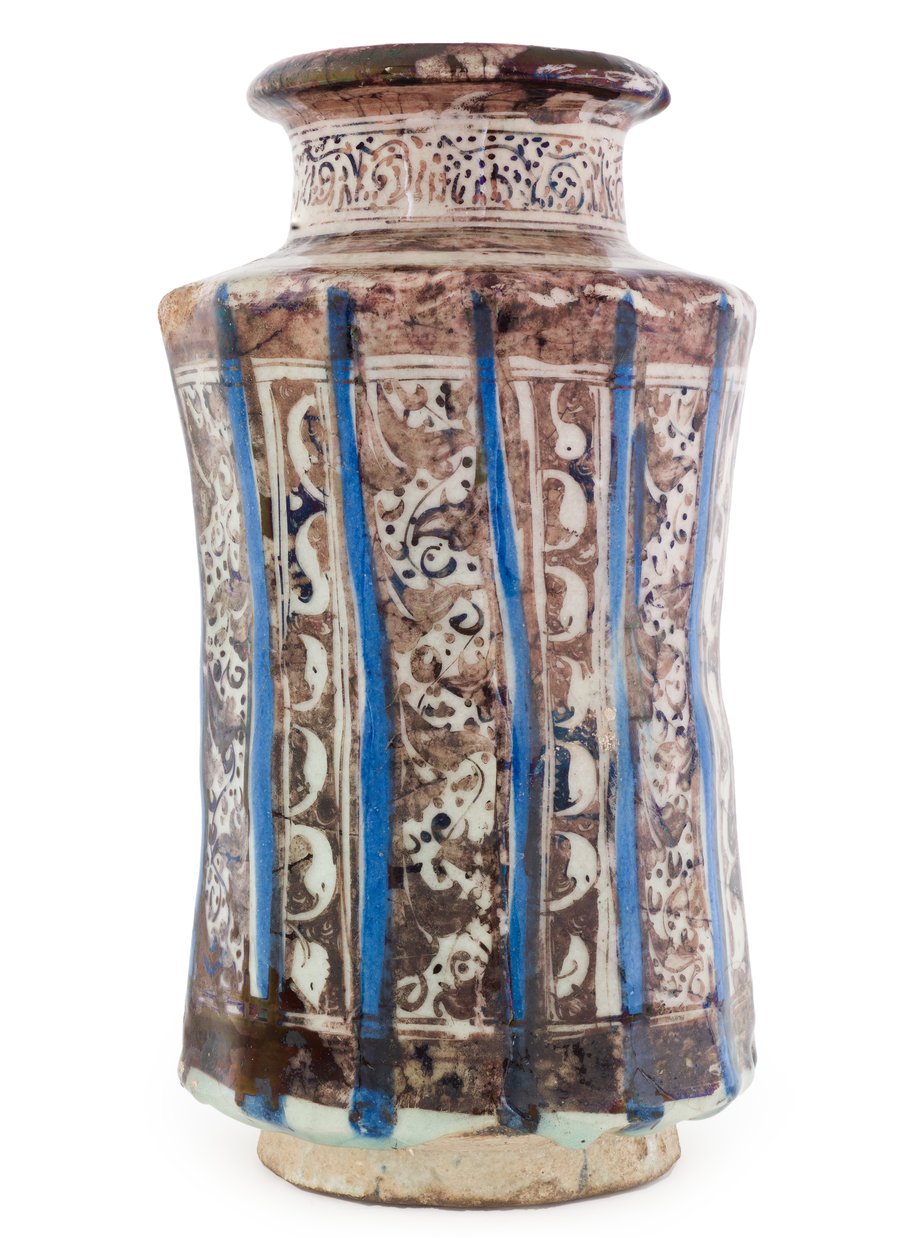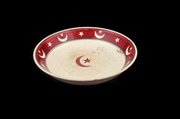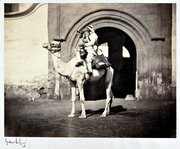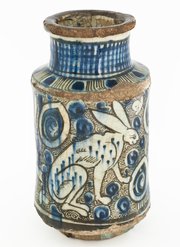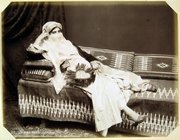
Lustreware Albarello
Museum of Islamic Art
- Title:
- Lustreware Albarello
- Production place:
- Raqqa
- Date:
- 1200 - 1225
- Period:
- Ayyubid
- Title:
- Lustreware Albarello
- Production place:
- Raqqa
- Date:
- 1200 - 1225
- Period:
- Ayyubid
- Material:
- Fritware, Pigment, Glaze, Lustre
- Technique:
- Underglaze painting, Lustre painting, Glazing
- Dimensions:
- 25.5 cm
- Diameter:
- 13.0 cm
The albarello (pl. albarelli) was used as a medicinal jar for holding apothecary ointments and dried herbal drugs. Its elongated shape helps to recognise the nature and function of this typical object. The Italian word "albarello" has a controversial etymology: sometimes said to be deriving from the Latin "albaris", meaning “whitened”, sometimes from the Arabic "البرميل", which designates a barrel. Albarelli have been produced in the Middle East and Central Asia from the 3rd-4th century AH/10th century CE and later on in 9th-century Ah/15th-century CE Spain and Italy; although, they are believed to have been first produced in Egypt or Syria before making their way to Europe through trade.
This albarello is an example of lustreware, which was produced in Syria during the 7th century AH/13th century CE. It has a cylindrical body with a tall neck and a slanting shoulder, standing on a short foot. It is decorated in bronze lustre and cobalt blue on a bright white ground with vertical bands containing floriate scrolls and geometric patterns, which was typical of pottery produced in Raqqa during the Ayyubid period. Albarelli can be decorated with different patterns, such as floral or geometrical designs, or with portraits of priests or scientists, and were produced in great numbers.
